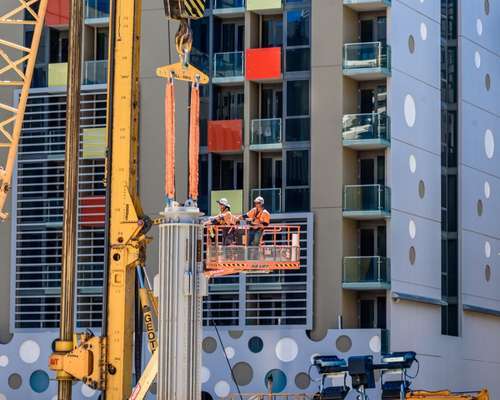1 Minute Read
August 16, 2022
0%

As we noted in part one of our two-part blog series, Australia’s construction industry faces significant challenges over the next five years. But firms needn’t adopt a bleak outlook of the future. The industry showed remarkable resilience throughout the pandemic and still generates $3.6 billion (roughly 9%) of Australia’s Gross Domestic Product. With 2.4% growth projected for the next five years, an optimistic construction industry forecast isn’t as far-fetched as one might think.
The next five years will be far from smooth sailing, but firms that remain agile, innovative and connected will be well-placed to seize the opportunities ahead. In part two below, we’ll explore some of those emerging construction opportunities.

The portrayal of the construction industry is often that of a sector working below capacity. In 2019, when labour productivity turned negative for the first time in 25 years, the Reserve Bank of Australia’s analysis pointed the finger at construction, weighting it least productive of all industries analysed. It’s a stereotype that’s perhaps unfair, but it does suggest opportunity exists for productive firms with efficient project management systems.
The next five years will see productive firms prosper. The Australian Construction Industry Forum (ACIF) says if overall “wasted effort” is reduced by a third, the industry could realise an annual $10 billion boost to residential and non-residential output.
Technology is one way firms can improve productivity and efficiency. Firms that adopt a connected construction approach, where data, workflows and timelines can be easily shared, analysed and understood, will realise gains from smarter ways of working.

The construction industry needs to find an additional 100,000 workers to deliver on the current pipeline of work slated for 2023. ACIF’s Market Report suggests a return to normal net immigration levels in the coming years will assist in this workforce growth. And firms can expedite this process by becoming more diverse, equitable and inclusive places to work.
Many groups remain underrepresented in the construction industry; research from the industry task force Culture in Construction illustrates part of the problem. Construction is the most male-dominated industry in Australia, with just three in every 25 construction workers female. While confronting, the figures are hardly a surprise. Analysis shows an average $36,361 pay gap between men and women in construction, and 60% of women in the industry admit to facing challenging behaviour on the job. Firms can do more to ensure representation for all ages, genders and ethnicities. Hiring with diversity and inclusion in mind is one way to minimise the impact of any labour shortage.

Circular economy, or a concerted enhanced effort to repair, reuse, recycle and renew materials, is a term you can expect to hear frequently. There’s a good reason for this. PricewaterhouseCoopers says Australia could realise $1,860 billion in direct economic benefits in the coming decades from a circular economy, saving 165 billion tonnes of CO2 along the way.
A circular economy helps the environment and makes good business sense, particularly in construction, an industry that generated almost 13 million tonnes of waste in 2018-19 and, as ACIF notes, is currently in the throes of a material shortage.
To realise this opportunity, the construction sector needs elegant, real-time data systems. These systems can help firms get a holistic view of the materials going in and out of a project, opportunities to recycle and renew, and any additional efficiencies.
The next five years will bring challenges and opportunities for the construction sector. Firms should be emboldened by the resilience shown throughout the pandemic. Remaining agile and innovative will have your firm well-positioned to realise opportunities that lie ahead.
1 Minute Read
August 16, 2022
1 Minute Read
July 27, 2022
1 Minute Read
July 6, 2022